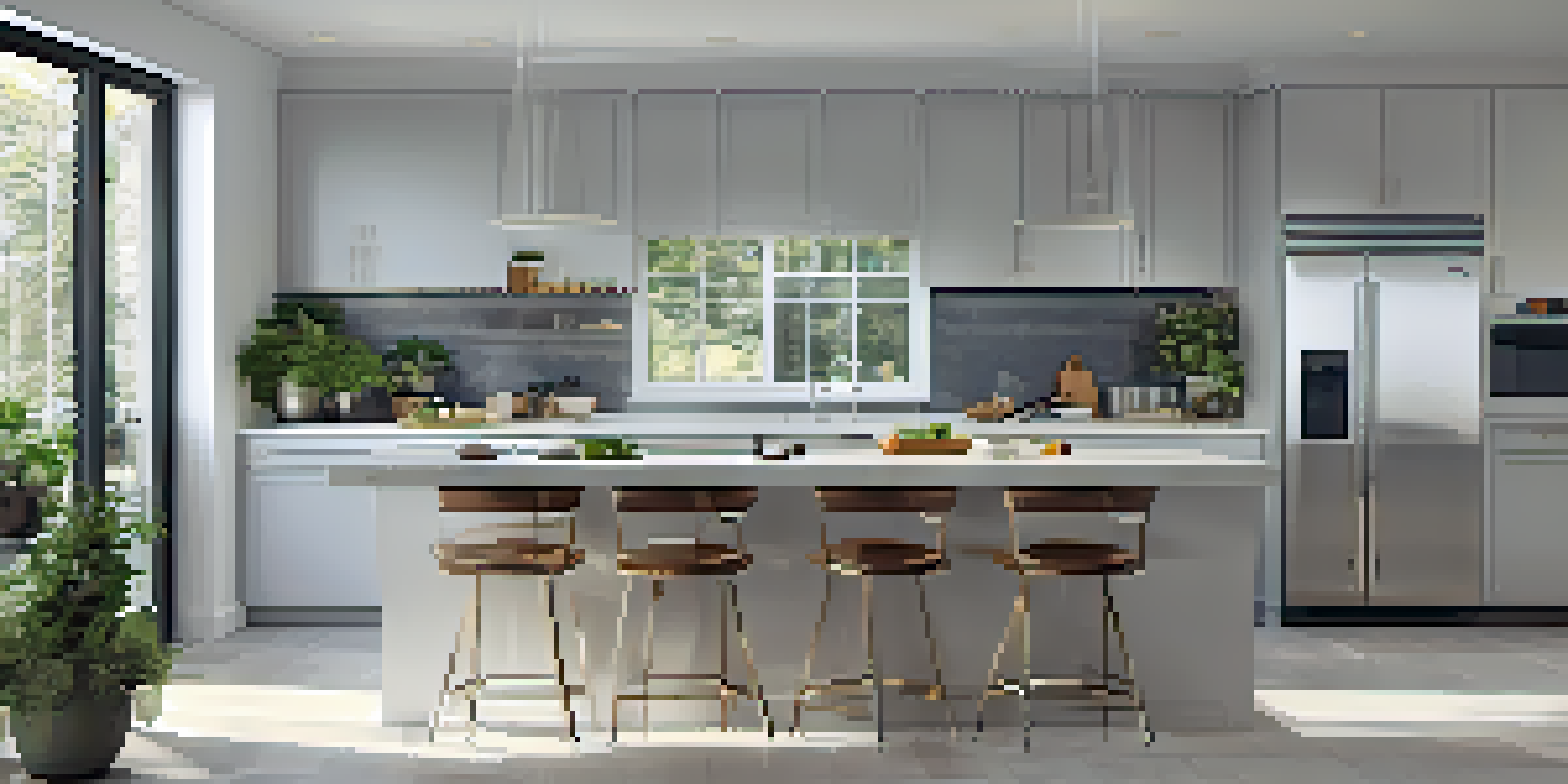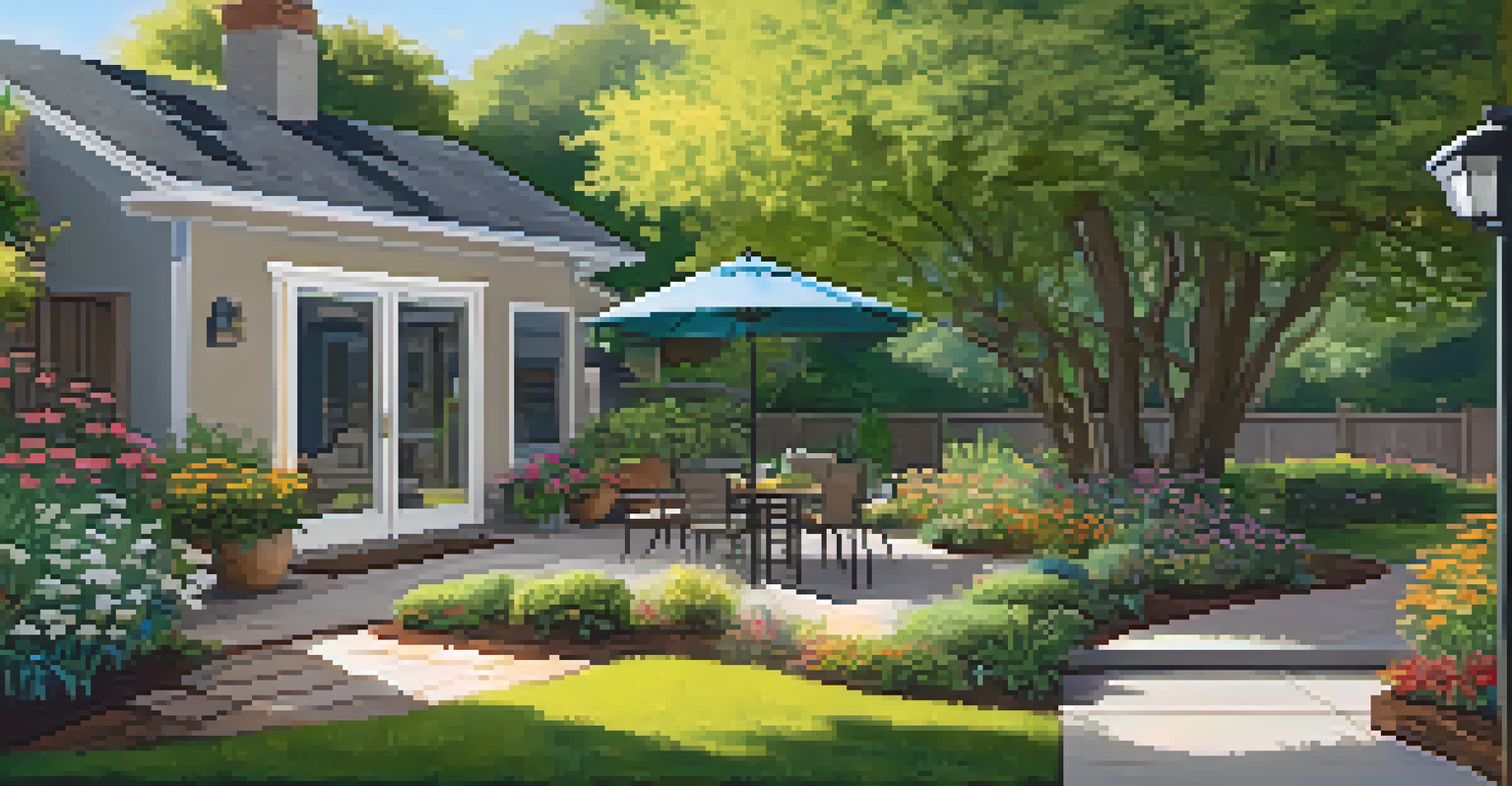Staging for Energy Efficiency: Showcasing Eco-Friendly Features

Understanding the Importance of Energy Efficiency in Staging
Energy efficiency is more than just a buzzword; it's a vital consideration for homebuyers today. With rising utility costs and an increasing awareness of environmental issues, many buyers are actively looking for homes that can save them money and reduce their carbon footprint. Staging your home with energy efficiency in mind can significantly enhance its appeal and market value.
Energy conservation is the foundation of energy independence.
When you stage a home, think about how you can highlight features that contribute to energy efficiency. This could include smart thermostats, energy-efficient appliances, or even insulation upgrades. By showcasing these aspects, you not only attract eco-conscious buyers but also demonstrate that the home is designed for modern living.
Incorporating energy efficiency into your staging strategy doesn’t just benefit the environment; it can also lead to a quicker sale. Homes that are energy-efficient are often perceived as being more desirable, which can create a competitive edge in the market.
Highlighting Energy-Efficient Appliances and Systems
One of the most straightforward ways to showcase energy efficiency is through the appliances in the home. Consider leaving out manuals or stickers that indicate energy ratings, such as ENERGY STAR certifications. This not only informs potential buyers but can also spark conversations about the benefits of lower energy consumption.

If the home features smart systems, like programmable thermostats or smart lighting, make sure they’re set up and functional during viewings. This allows prospective buyers to see firsthand how these systems can simplify their lives while contributing to energy savings. A simple demonstration can go a long way in making a lasting impression.
Additionally, if you've recently updated any major systems—like HVAC or water heaters—be sure to highlight these upgrades. Buyers love to see that they won’t have to make significant investments in these areas right away, making the home even more appealing.
Creating a Bright, Inviting Atmosphere with Natural Light
Natural light is an energy-efficient feature that often gets overlooked but can make a substantial difference in staging. Homes that are well-lit naturally tend to feel more inviting and spacious, which is something every seller desires. Open curtains and blinds to let in as much light as possible during showings.
The greatest threat to our planet is the belief that someone else will save it.
You can also enhance the natural light in your home by using mirrors strategically. Placing mirrors opposite windows can help reflect light and create the illusion of a larger space, all while emphasizing the home’s eco-friendly qualities. This simple trick not only brightens a room but also showcases the importance of energy-efficient lighting.
Moreover, consider using light, neutral colors for walls and furnishings to further amplify the brightness. A fresh, airy environment not only feels more welcoming but also highlights the home's reliance on natural light rather than artificial lighting, reinforcing its energy-efficient appeal.
Landscaping for Energy Efficiency: Outdoor Considerations
Landscaping can play a crucial role in energy efficiency, both in terms of aesthetics and functionality. Trees and shrubs planted strategically can provide shade during the hot summer months, which can help cool the home naturally and reduce reliance on air conditioning. This is an eco-friendly selling point that many buyers appreciate.
When staging your home, make sure to keep the yard tidy and well-maintained, as this sets up a positive first impression. Consider using native plants that require less water and maintenance, showcasing both eco-friendliness and sustainability. This not only appeals to environmentally conscious buyers but also highlights the practicality of lower upkeep costs.
If your home has outdoor features like rainwater collection systems or efficient irrigation, be sure to showcase them. These elements not only enhance the property’s green credentials but also demonstrate a commitment to sustainability and responsible living.
Showcasing Insulation and Energy-Efficient Windows
Good insulation and energy-efficient windows are key elements that buyers often overlook. During staging, consider providing information about the insulation materials used and the benefits of double or triple-glazed windows. This can help buyers understand how these features can lead to significant energy savings over time.
You can even take it a step further by conducting a simple energy audit before showings. Providing potential buyers with a report or testimonials about the home’s energy efficiency can build trust and underscore the value of these features. It’s all about giving them a clear picture of the long-term benefits.
In addition, ensure that windows are clean and unobstructed so that buyers can appreciate the views and the natural light they bring. Well-maintained windows not only enhance the appearance of the home but also serve as a tangible reminder of its energy-efficient qualities.
Utilizing Eco-Friendly Staging Materials and Techniques
When staging a home, consider using eco-friendly materials and techniques to reinforce the energy-efficient theme. For example, you might opt for furniture made from sustainably sourced wood or decor items made from recycled materials. This not only aligns with the home's green features but also tells a story about commitment to sustainability.
Additionally, using low-VOC (volatile organic compounds) paints and finishes can improve indoor air quality, which is another attractive feature for health-conscious buyers. Highlighting these choices during showings can provide an extra layer of appeal, making the home feel fresher and more inviting.
Moreover, consider incorporating plants into your staging. Not only do they add a splash of color and life, but many plants also improve air quality. By showcasing your commitment to eco-friendly practices, you create a narrative that resonates with modern buyers seeking homes that reflect their values.
Marketing Your Home’s Eco-Friendly Features Effectively
Once your home is staged with energy efficiency in mind, it’s time to market these features effectively. Use high-quality photos that highlight the eco-friendly aspects of the home, such as natural light, energy-efficient appliances, and beautifully landscaped yards. The right visuals can capture attention and intrigue potential buyers.
Don’t shy away from using social media and real estate platforms to share your home’s story. Create posts that focus on the benefits of energy efficiency, including potential savings on utility bills and the positive impacts on the environment. Engaging content can draw in a wider audience and spark interest.

Lastly, consider including a brochure during showings that outlines the home’s energy-efficient features and benefits. Providing clear, concise information helps buyers see the value of these elements, making them more likely to take action. Remember, effective marketing is about connecting with buyers on both practical and emotional levels.